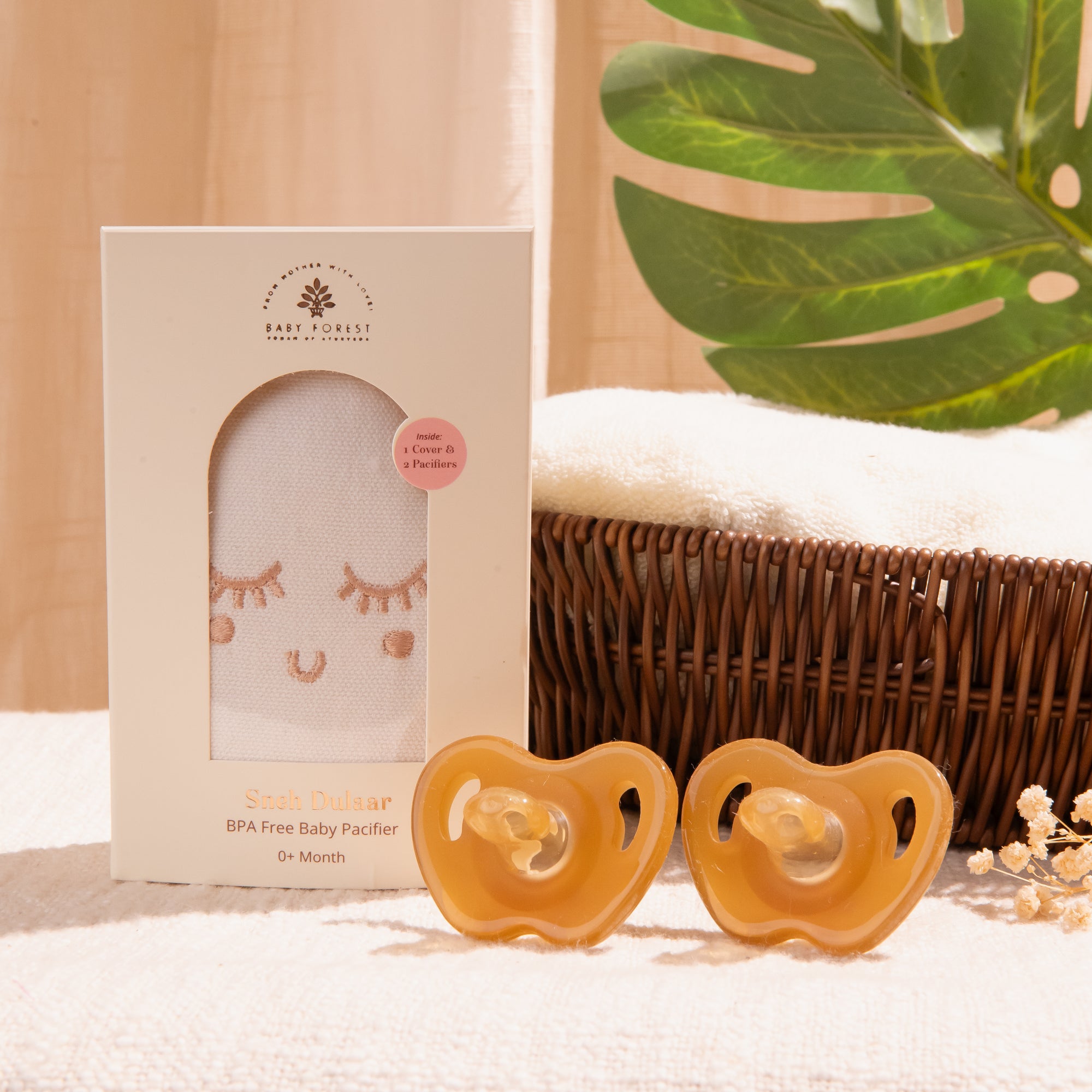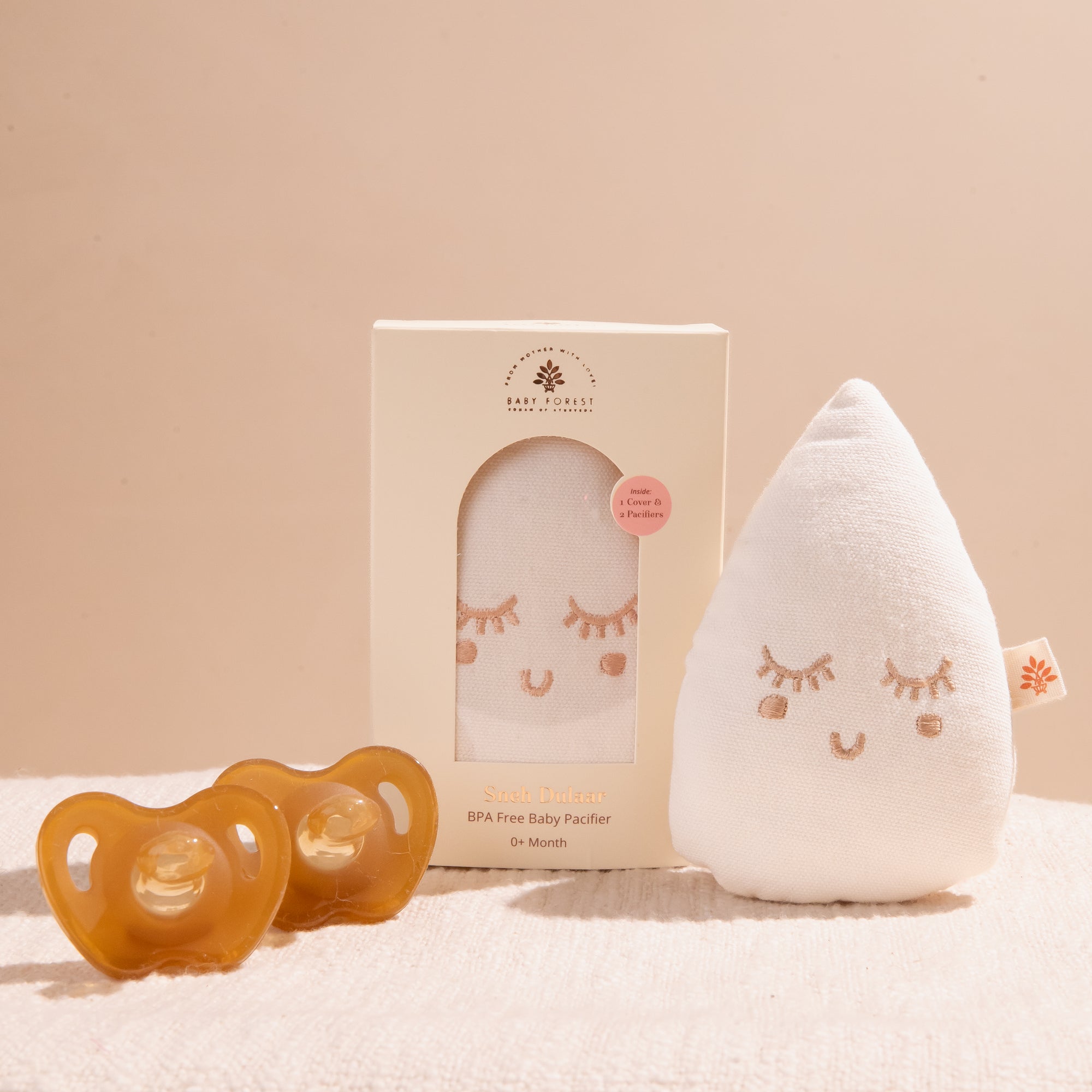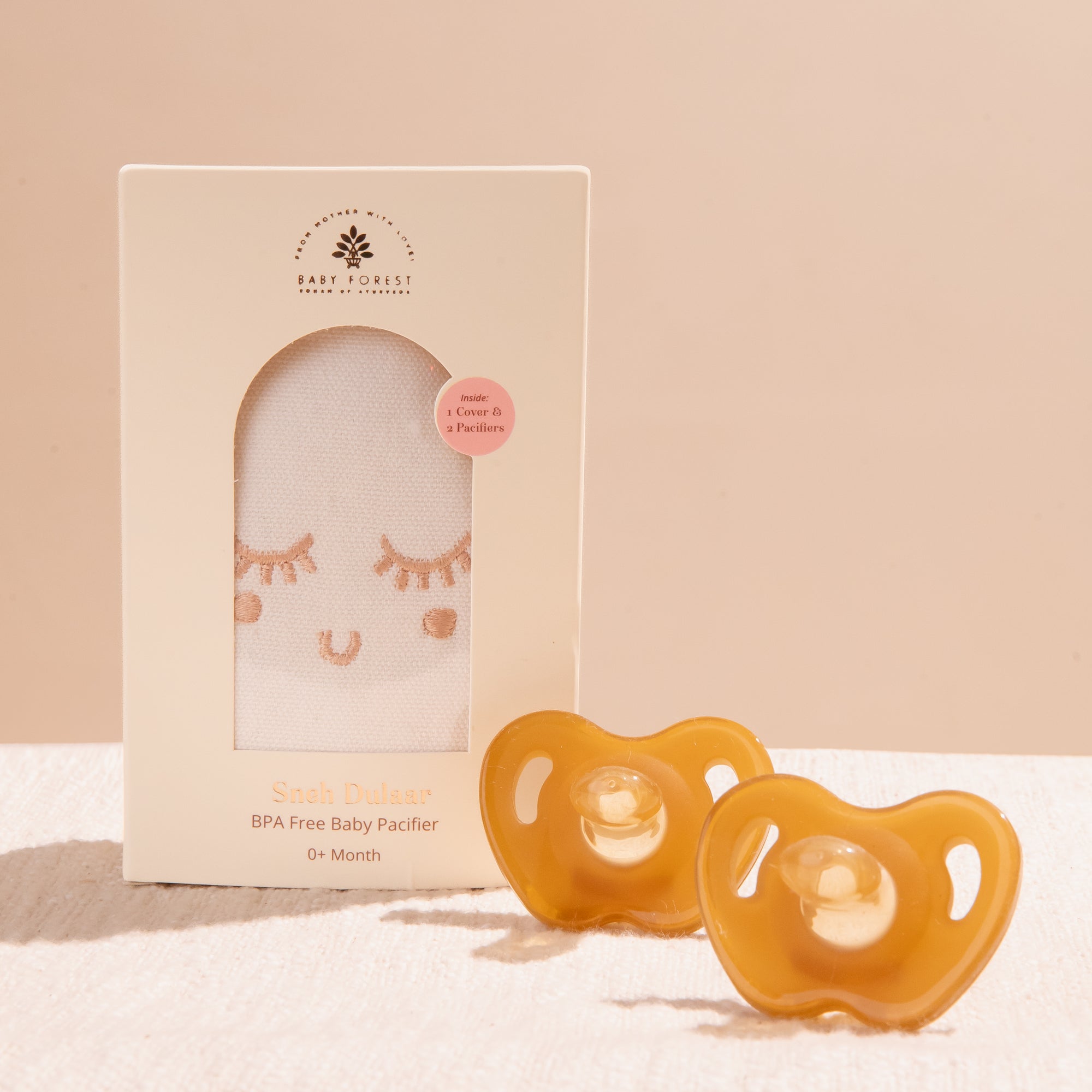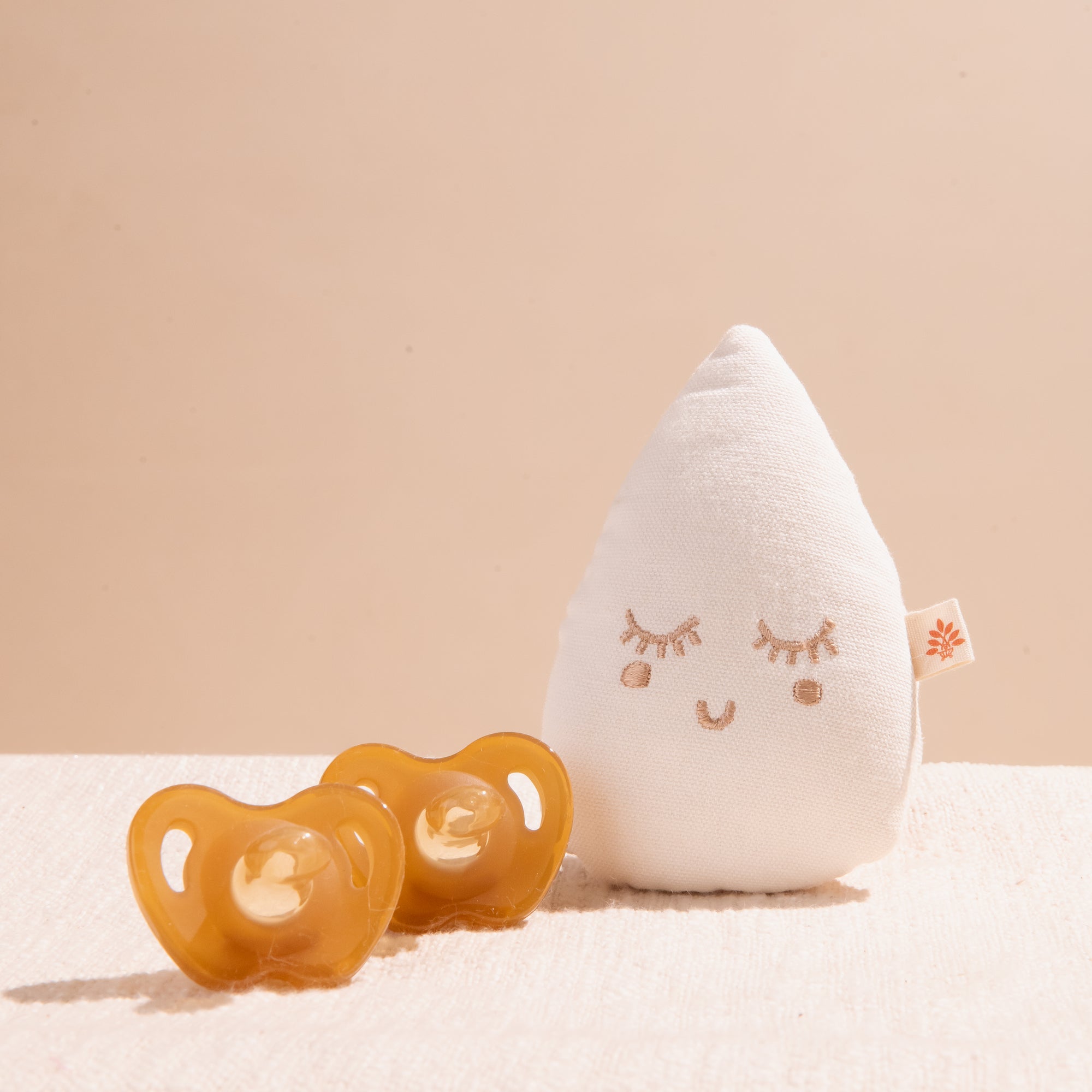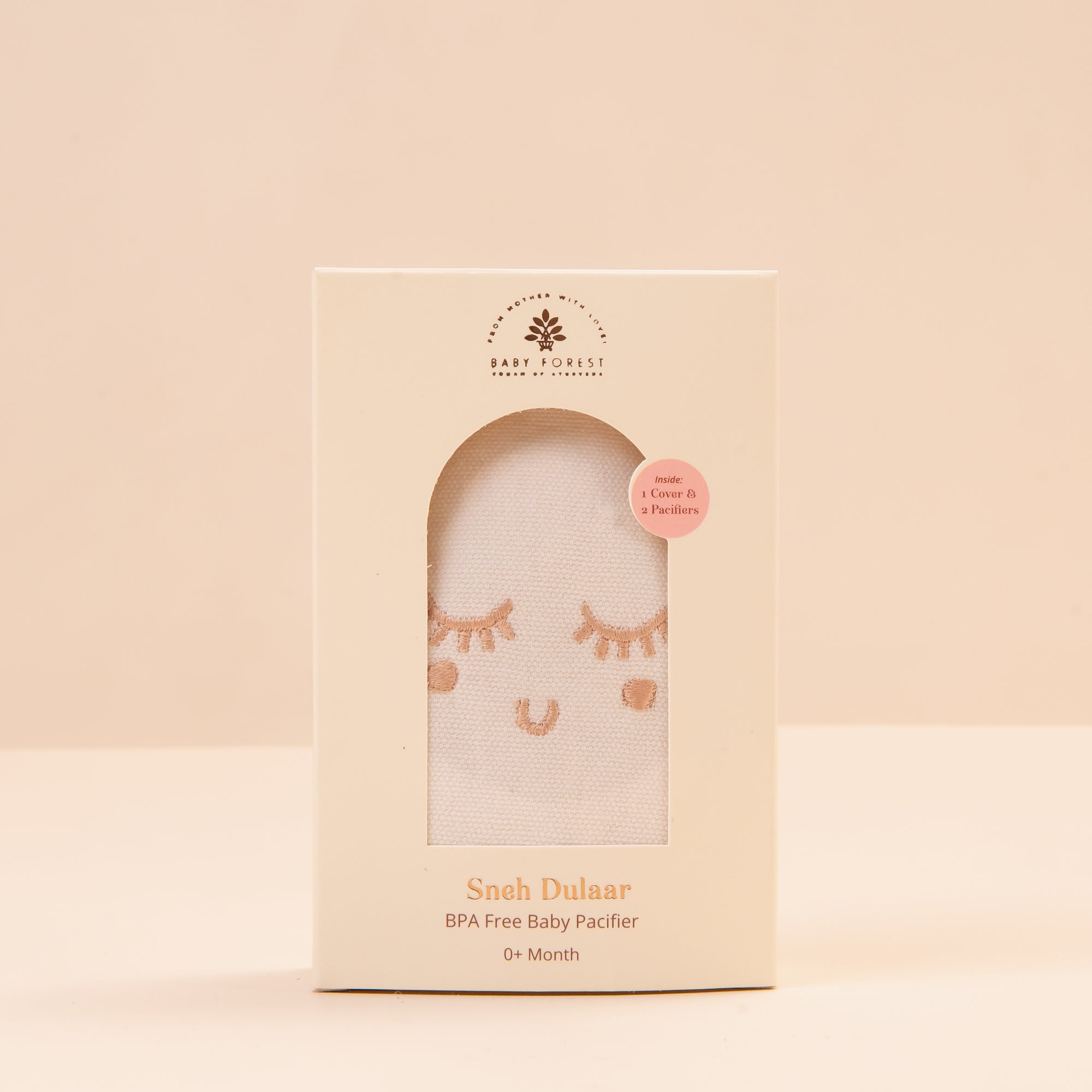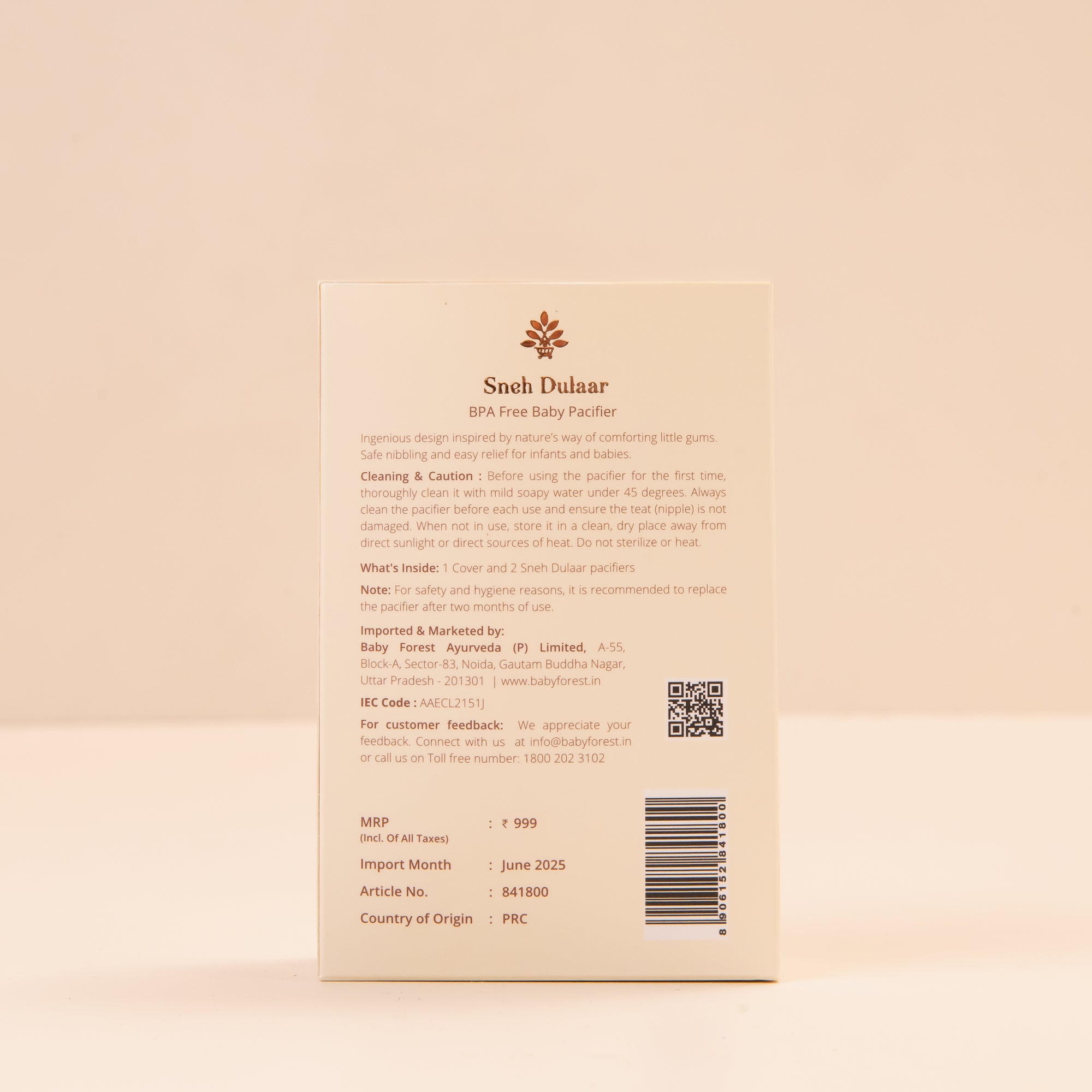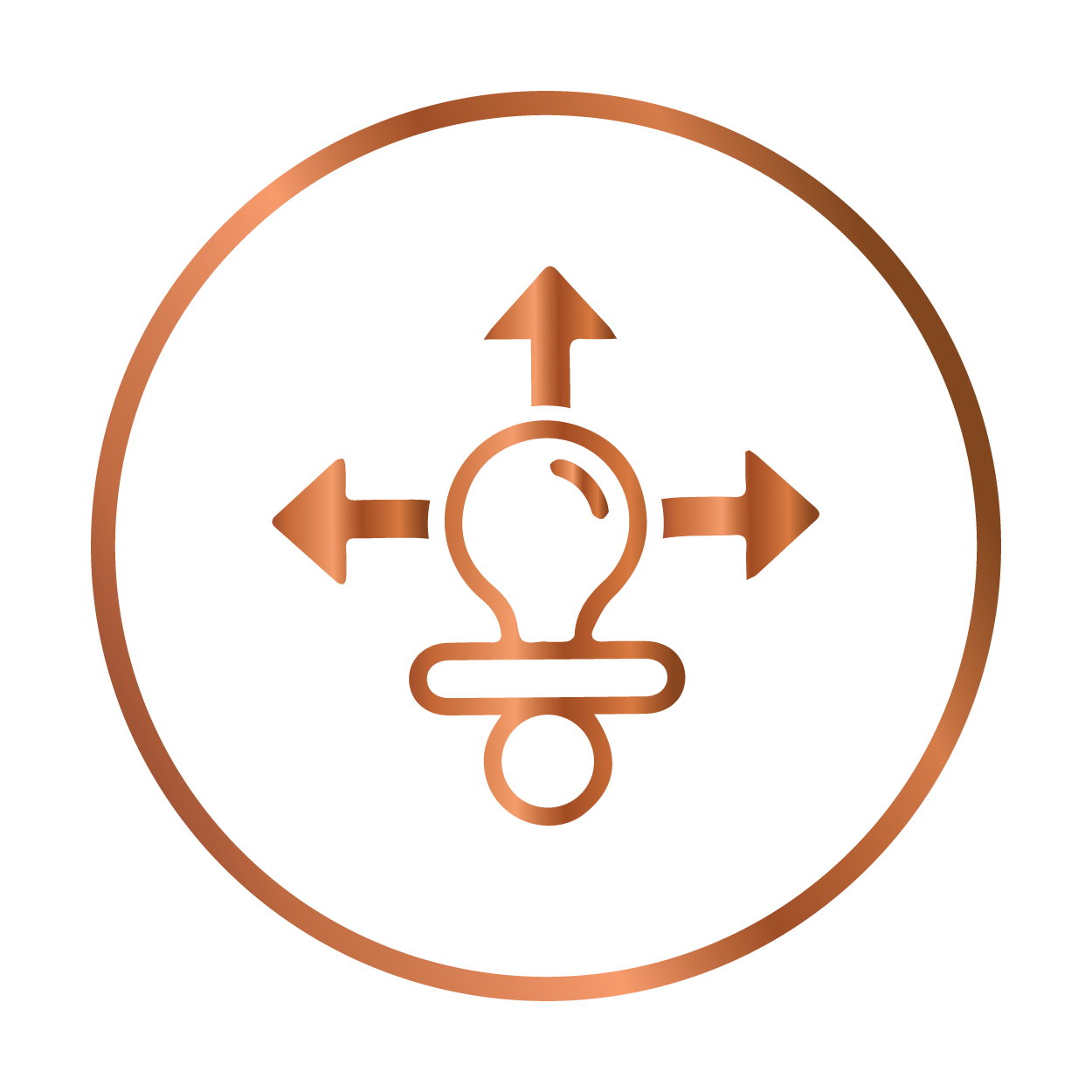Your Baby Benefits
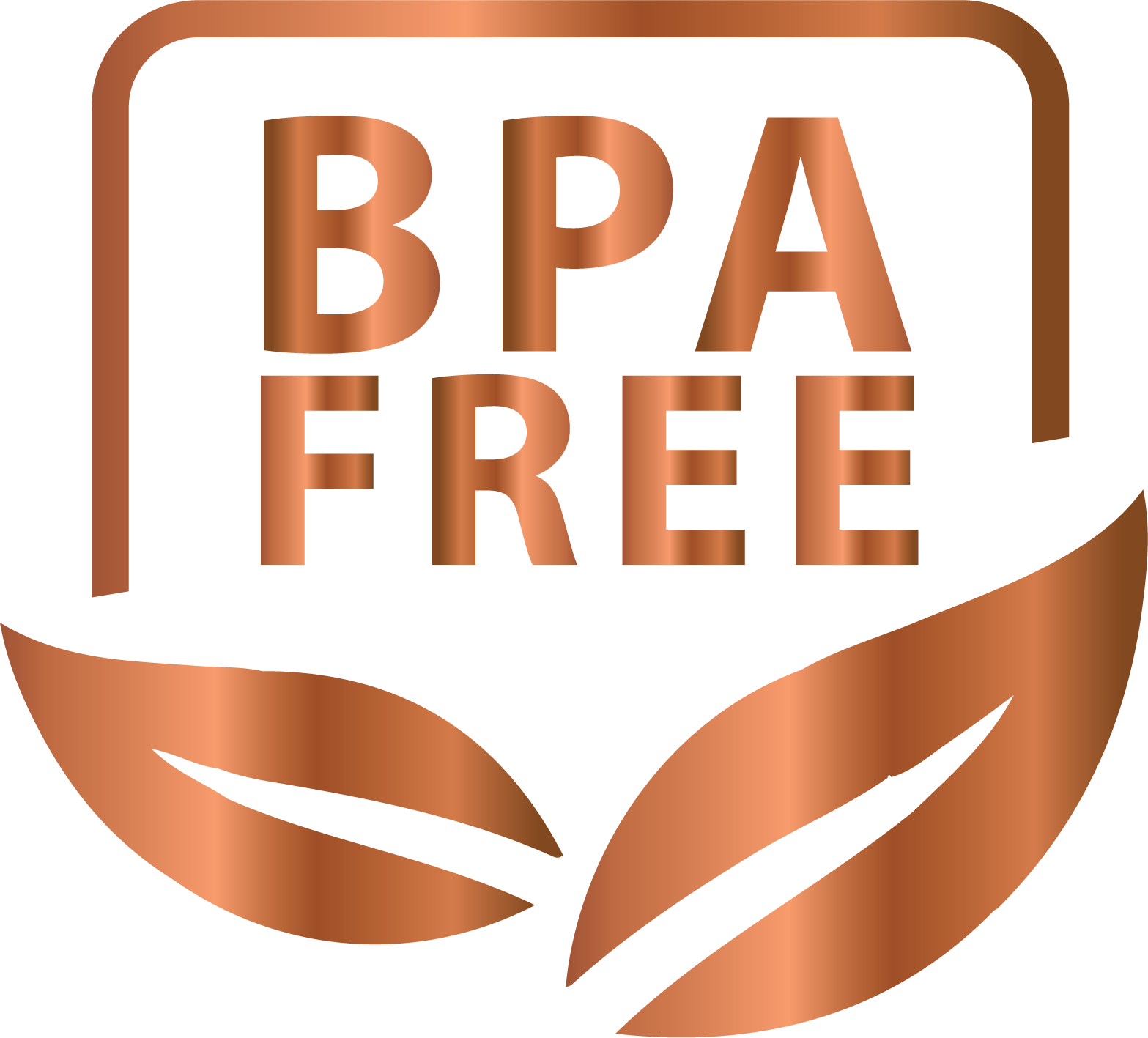
BPA Free
High-quality food-grade silicone for hygienic and safe use

Low Friction
Low friction design prevents the red tongue

Breathable Design
Ventilation holes on both sides for smooth breathing and long-lasting comfort
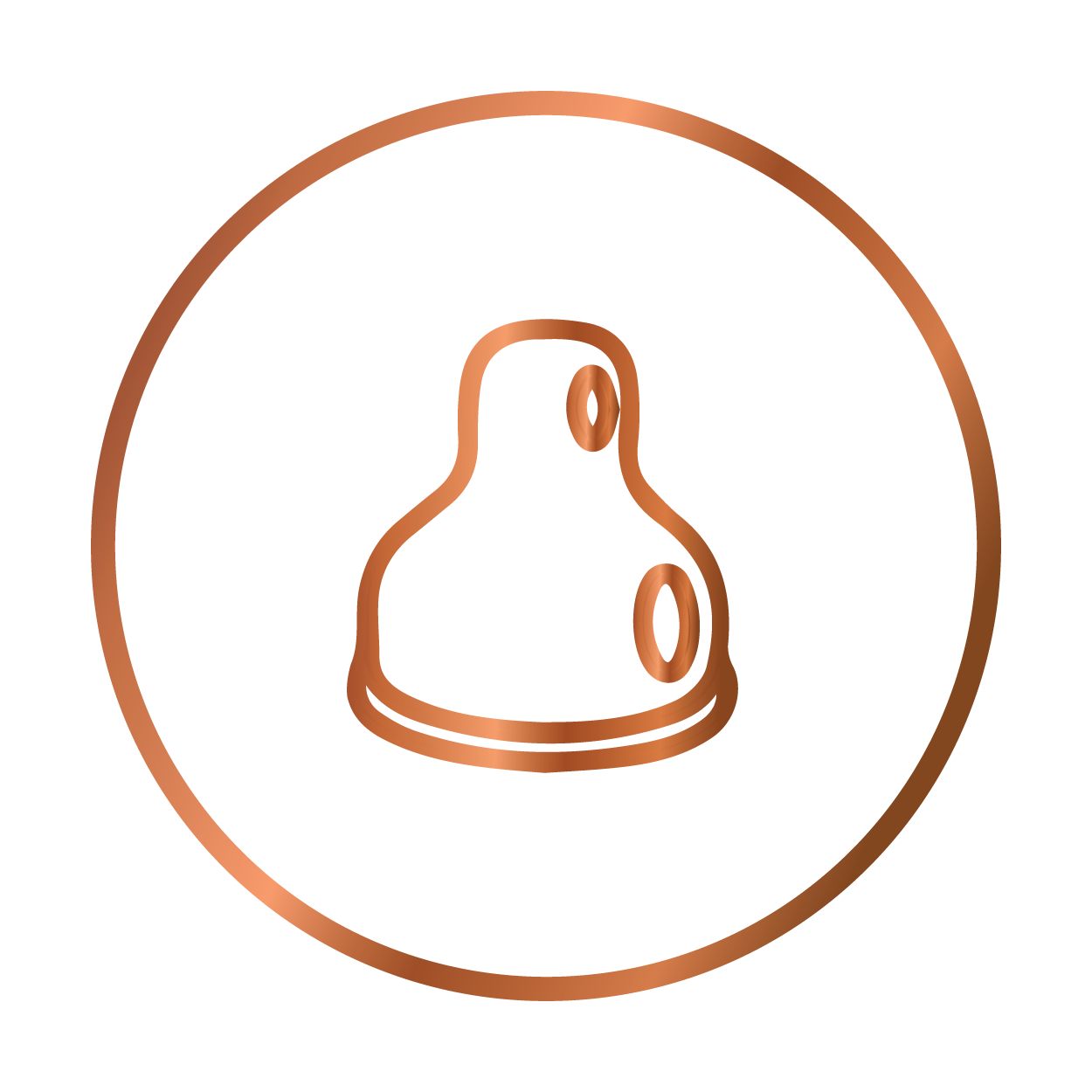
Skin-like Texture
Providing breast-like comfort for a natural, soothing experience
FAQs
Are pacifiers good for babies?
Pacifiers can help soothe babies by satisfying their natural sucking reflex. When made from soft, baby-safe materials, they offer comfort during naps or stressful moments. They may even support better sleep and reduce the risk of sudden night awakenings. It's important to use pacifiers wisely and ensure they are clean, the right size, and free from harsh chemicals.
How many hours should a baby use a pacifier?
It’s best to limit pacifier use to sleep times or when your baby needs soothing. Using it too often during the day might lead to dependency. Ideally, offer the pacifier during naps and bedtime, and avoid letting your baby keep it in their mouth all day. Always supervise use and ensure it’s made of safe, soft, BPA-free material.
Should I remove the pacifier once the baby is asleep?
Yes, once your baby is asleep, you can gently remove the pacifier. This helps reduce dependency over time and prevents the need to replace it if it falls out. If your baby stays asleep without it, there's no need to reinsert it. Always choose pacifiers that are soft and designed to rest comfortably without disturbing sleep.
Can a breastfed baby sleep with a pacifier?
Yes, a breastfed baby can use a pacifier during sleep. It’s usually safe to introduce one after breastfeeding is well-established, around 3 to 4 weeks. Choose a pacifier that is soft, flexible, and gentle on the baby’s mouth. Avoid using one too early to ensure it doesn’t interfere with natural feeding and latching habits.
Will the baby spit out pacifier if hungry?
Yes, most babies will spit out a pacifier when they are hungry. A pacifier can offer comfort, but it doesn’t replace feeding. If your baby seems fussy and won’t settle with a pacifier, it’s likely they need to be fed. Pacifiers are helpful for soothing, but shouldn’t be used to delay regular feeding times.
How do I know which pacifier to use?
Choose a pacifier based on your baby’s age and comfort. Look for one that is BPA-free, soft, and flexible. The nipple size should match your baby’s stage of development to avoid discomfort. A one-piece design is often safer, as it reduces the chance of breakage or choking. Also, check for ventilation holes that help prevent rashes around the mouth.
Does it matter what pacifier I give my baby?
Yes, choosing the right pacifier is important. A well-designed pacifier with soft, food-grade silicone and a shape that suits your baby’s mouth helps avoid discomfort or irritation. Make sure it’s the correct size for your baby’s age and doesn’t contain harmful materials. A good pacifier supports soothing without interfering with oral development or feeding habits.
At what age is a pacifier recommended?
A pacifier can be introduced from birth if your baby is bottle-fed or after breastfeeding is well-established, usually around 3 to 4 weeks. It’s important to choose a pacifier that suits your baby’s age and is made of soft, safe materials. Starting at the right time helps avoid feeding confusion and supports healthy soothing habits.
How do I clean a baby pacifier properly?
To clean a baby pacifier, wash it with warm water and a mild, baby-safe cleanser. Sterilize it regularly by boiling or using a steam sterilizer. Make sure it's completely dry before giving it to your baby. Choose pacifiers made of safe, non-toxic materials like BPA-free silicone to ensure they stay hygienic and gentle on your baby’s mouth.
How often should I replace a baby's pacifier?
Pacifiers are generally safe in the early months, but long-term or incorrect use may affect teeth alignment as your baby grows. To prevent dental issues, choose orthodontic pacifiers that support natural oral development and begin weaning off by age two. Using a soft, well-shaped pacifier designed for babies helps avoid pressure on gums and teeth.
Can pacifiers affect my baby’s teeth development?
Pacifiers should be replaced every 4 to 6 weeks, or sooner if there are signs of wear like cracks, tears, or discoloration. Regular checks are important to keep your baby safe. Pacifiers made from high-quality, soft silicone or natural rubber tend to be more durable, but still require frequent inspection and timely replacement.
When should I start weaning my baby off the pacifier?
It’s generally advisable to begin weaning your baby off the pacifier between 6 to 12 months of age. Prolonged use beyond this period can affect oral development, including teeth alignment and jaw growth. Starting the weaning process early makes the transition smoother for both parent and baby, reducing resistance and forming healthier soothing habits over time. Gradual changes work best.


